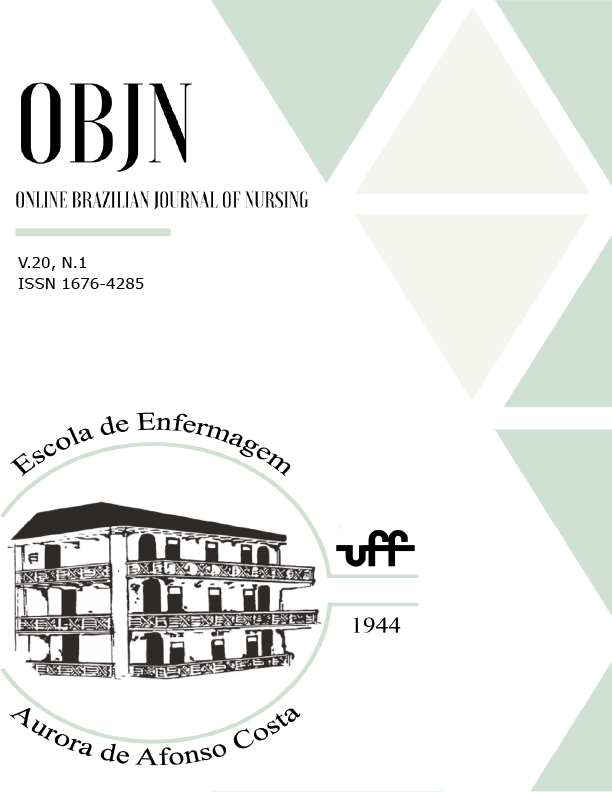Resumo
Objetivo: avaliar os fatores associados aos óbitos e ataques de tubarão no Brasil. Método: trata-se de um estudo transversal, quantitativo, realizado mediante acesso virtual ao website do Global Shark Attack File. A análise foi realizada no programa R, a partir de estatística descritiva e dos testes de Qui-quadrado de Pearson e Teste Exato de Fisher. Resultados: ocorreram 86 ataques, dos quais 26 (30,2%) resultaram em óbito. Foi encontrada associação entre a ocorrência de ataque com o ano, estado, região, dia da semana, turno e espécie do tubarão, além da faixa etária, sexo da vítima e local do corpo acometido. Nenhuma variável apresentou associação com o óbito. O estado de Pernambuco computou o maior número de ataques (83,7%) e óbitos (96,2%). Conclusão: os ataques de tubarão estiveram associados com nove variáveis: três de caracterização da vítima e seis do perfil do acidente. Os óbitos não apresentaram associação significativa.
Referências
Kaminsk A, Bell KP, Noblet CL, Evans KS. An economic analysis of coastal beach safety information-seeking behavior. Agric Res Economics [Internet]. 2017 [cited 2020 aug 12];46(2):365-387. Available from: https://doi.org/10.1017/age.2017.17
Lemahieu A, Blaison A, Crochelet E, Bertrand G, Pennober G, Soria M. Human-shark interactions: The case study of Reunion island in the south-west Indian Ocean. Ocean & Coastal Management [Internet]. 2017 [cited 2020 aug 12];136:73-82. Available from: https://www.sciencedirect.com/science/article/abs/pii/S0964569116303246
International Shark Attack File. Yearly worldwide shark attack summary [Internet]. 2018 [cited 2020 aug 12]. Available from: https://www.floridamuseum.ufl.edu/shark-attacks/yearly-worldwide-summary/
Ricci JA, Vargas CR, Singhal D, Lee BT. Shark attack-related injuries: Epidemiology and implications for plastic surgeons. J Plast Reconstr Aesthet Surg [Internet]. 2016 [cited 2020 aug 12];69(1):108-14. Available from: https://www.ncbi.nlm.nih.gov/pubmed/26460789
Zziwa EB, Muhumuza C, Muni KM, Atuyambe L, Bachani AM, Kobusingye O C. Road traffic injuries in Uganda: pre-hospital care time intervals from crash scene to hospital and related factors by the Uganda Police. Int J Inj Contr Saf [Internet]. 2019 [cited 2020 aug 12];26(2):170-175. Available from: https://www.ncbi.nlm.nih.gov/pubmed/30541384
Posada MAG, Suñe AB, Siero JMN, Azuraga CIS, Soler MJC. Damage control resuscitation in polytrauma patient. Rev Esp Anestesiol Reanim [Internet]. 2019 [cited 2020 aug 12];66(7):394-404. Available from: https://www.ncbi.nlm.nih.gov/pubmed/31031044
Ritter E, Amin R, Cahn K, Lee J. Against common assumptions, the world’s shark bite rates are decreasing. J Marin Biology [Internet]. 2019 [cited 2020 aug 12];7184634. Available from: https://www.hindawi.com/journals/jmb/2019/7184634/
Shark Research Institute. Understood, protected, thriving [Internet]. 2020 [cited 2020 aug 12]. Available from: https://www.sharks.org/global-shark-attack-file
Shark Research Institute. Global shark attack file [Internet]. 2020 [cited 2020 aug 12]. Available from: https://www.sharks.org/mission-work
Silva ACR, Nascimento RM. Learning to live with sharks: humans and no-humans relations in Recife and Fernando de Noronha Archipelago (BRA). Cad Elet Ciênc Sociais [Internet]. 2019 [cited 2020 aug 12];7(2):66-81. Available from: http://www.periodicos.ufes.br/cadecs/article/view/28292/20110
He P, Chaparro AAM, Farine DR. The role of habitat configuration in shaping social structure: a gap in studies of animal social complexity. Behav Ecol Sociobiol [Internet]. 2019 [cited 2020 aug 12];73(9). Available from: https://link.springer.com/article/10.1007/s00265-018-2602-7
Comitê Estadual de Monitoramento de Incidentes com Tubarão – CEMIT. Estatística dos incidentes com tubarões ocorridos no Estado de Pernambuco [Internet]. Recife: Secretaria de Defesa Social; 2018 [cited 2018 june 12]. Available from: http://www.portaisgoverno.pe.gov.br/web/sds/cemit1.
Saunders CJ, Adriaanse R, Simons A, Niekerk AV. Fatal drowning in the Western Cape, South Africa: a 7-year retrospective, epidemiological study. Injury Prevention [Internet]. 2019 [cited 2020 aug 12];25(6):529-534. Available from: https://injuryprevention.bmj.com/content/25/6/529
Preis LC, Lessa G, Tourinho FSV, Santos JLG. Mortality epidemiology for external causes in the period 2004 to 2013. J Nurs UFPE online [Internet]. 2018 [cited 2020 aug 12];12(3):716-28. Available from: https://periodicos.ufpe.br/revistas/revistaenfermagem/article/view/230886/28031
Klick C, Jones CMC, Adler D. Surfing USA: an epidemiological study of surfing injuries presenting to US EDs 2002 to 2013. Ame J Emerg Med [Internet]. 2016 [cited 2020 aug 12];34(8):1491-6. Available from: https://www.ncbi.nlm.nih.gov/pubmed/27262604
Gopinathan NR, Santhanam SS, Saibaba B, Dhilon MS. Epidemiology of lower limb musculoskeletal trauma with associated vascular injuries in a tertiary care institute in India. Indian J Orthop [Internet]. 2017 [cited 2020 aug 12];51(2):199-204. Available from: https://www.ncbi.nlm.nih.gov/pubmed/28400667

Este trabalho está licenciado sob uma licença Creative Commons Attribution 4.0 International License.
Copyright (c) 2021 Array

